The Shadow Functions of the ESTP Personality Type
Today we’re going to take an in-depth look at the ESTP shadow functions. Knowing about this 8-function model of type can help you get a much deeper look at who you are. Most online articles about ESTPs will only touch the surface of how ESTPs process information. Most books will only cover how ESTPs use their main four cognitive functions. This article is going to get a lot more in-depth, but hopefully not too complicated!
Not sure what your personality type is? Take our new personality questionnaire!
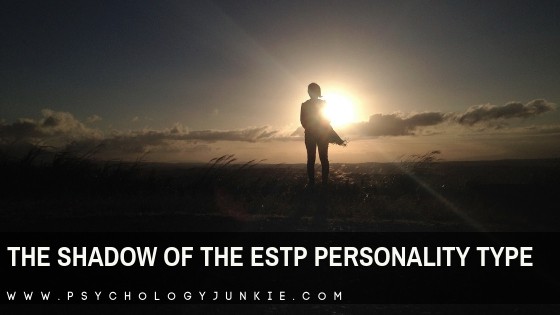
What is the 8-Function Type Model?
When you first discover your Myers-Briggs® personality type, you’ll focus primarily on the four preferences of your type. As an ESTP those preferences are literally E – Extroversion, S – Sensing, T – Thinking, and P – Perceiving. Many people stop their exploration of type there – that’s enough information for them. Some people will go further in-depth and explore the cognitive functions of their type. For the ESTP, these functions would be as follows:
Dominant Function (Hero): Extraverted Sensing (Se)
Auxiliary Function (Mother/Father): Introverted Thinking (Ti)
Tertiary Function (Child): Extraverted Feeling (Fe)
Inferior Function (Anima/Animus): Introverted Intuition (Ni)
Now if you’re brand new to type, this all might look extremely confusing. The “function stack” that you see here explains the four mental processes that ESTPs rely on most consciously when they process information and make decisions.
ESTPs primarily process information through Extraverted Sensing (Se) with often weaker back-up from Introverted Intuition (Ni). They primarily make decisions using Introverted Thinking (Ti) with typically weaker support from Extraverted Feeling (Fe). There will be moments where ESTPs have a profound grasp of Intuition and Feeling, but they will typically show more control and strength with Sensing and Thinking.
Today we’re going to dive even deeper into the rabbit hole of the ESTP mind. ESTPs have four more functions that they use on a daily basis, but these functions are less conscious and are often seen as foreign to them. They may not even realize that they’re using these functions and can be blind to their weaknesses in these areas. They can also risk making projections or unfair assumptions about other people because of the placement of these functions. These functions are called the “Shadow Functions.”
The ESTP Shadow Functions:
Opposing Role: Introverted Sensing (Si)
Critical Parent/Senex: Extraverted Thinking (Te)
Trickster: Introverted Feeling (Fi)
Demon: Extraverted Intuition (Ne)
Surely all those titles can sound ominous and a little outlandish for most of us. I know when I first started learning about the shadow functions I found the names a little off-putting at first. But bear with me and you’ll soon understand why the shadow functions have these specific titles.
The four primary functions that we mentioned initially are what ESTPs accept into their ego. ESTPs feel conscious and exhibit a certain amount of control when they are using Se, Ti, Fe, and Ni (I’m going to use the abbreviations for the cognitive functions from now on to save time). ESTPs see these functions as part of themselves, they understand them to an extent, and can exhibit mastery of them in many situations.
Shadow functions, in contrast, tend to trip us up and seem “other” to us. We’re often blind to the mistakes we make when we use them. We don’t relate to them, and in fact, we can struggle to relate to people who value them and use them easily. Shadow functions tend to be the source of many of our projections and unfair assessments of others. But they aren’t all bad! Awareness of these functions can help us to grow and make better wiser decisions.
A Little Background:
The 8-Function Type Model we’ll be using today comes from the research and work of Dr. John Beebe, M.D., and Mark Hunziker. Beebe is a Jungian analyst and editor of the San Francisco Jung Library Journal. He is also the co-editor of the Journal of Analytical Psychology and the author of Energies and Patterns in Psychological Type: The Reservoir of Consciousness. Mark Hunziker is a consultant for the Association of Psychological Type and the author of Depth Typology. Both Beebe and Hunziker have worked to shine a light on the ways each of us is influenced by our non-preferred shadow functions. They felt that the work of Isabel Briggs Myers was useful but unfinished. Through working with clients and further in-depth research into Carl Jung’s work, both Hunziker and Beebe were able to bring type knowledge to a whole new level of understanding.
A Brief Look at the ESTPs Four Primary Cognitive Functions
Hero Function: Extraverted Sensing (Se)
ESTPs have a strong grasp of outer reality and are able to maneuver through the world with a certain elegance and readiness. They enjoy the sensual, exciting, changing, physical world around them. They enjoy being impulsive and are quite good at adapting to new and unexpected situations. In fact, they’re typically bored when life doesn’t throw them a few curveballs or challenges. Because of Extraverted Sensing, ESTPs are masters of details. They can find their way around strange new places quickly, they are often the first to react to a surprise event, and they are aware of where things are in the spaces around them. They enjoy being active, present and engaged with their environment. Their high-alertness and attentiveness to details gives them abilities and skills in performance, storytelling, sportsmanship, or emergency-relief. Heroic Se gives ESTPs the dexterity, cleverness, and realism that make them shine in careers as surgeons, detectives, performers, firefighters, or any role that will utilize their ability to think quickly on their feet.
Mother/Father Function: Introverted Thinking (Ti)
ESTPs protect and nurture others (and themselves) through the use of Introverted Thinking, or “Ti”. Ti gives ESTPs the analytical power to make accurate, logical decisions in whatever moment they find themselves in. These types hold tightly to their principles and their sense of truth. They mentally evaluate information and sift through it to rid themselves of any data that has the slightest bit of inaccuracy in it. They crave logical consistency and enjoy categorizing data to know where it fits in the grand scheme of things.
Because ESTPs value Ti, they don’t mind casting aside social norms, traditions, or rules if they lack logic. As an example, an ESTP is unlikely to stay stopped at a red light if nobody is coming. It simply isn’t logical to them. Rules and bureaucracy are of secondary importance to what makes sense at the moment. As a protective measure, ISTPs use Ti to help other people sort out their problems. They encourage individuals to rid themselves of the trappings of conventions and expectations that don’t make sense. They are good at finding new ways to analyze or organize information and they enjoy troubleshooting for the people they care about.
Eternal Child Function: Extraverted Feeling (Fe)
When ESTPs are relaxed and playful they enjoy engaging with Extraverted Feeling, or “Fe.” Fe is a decision-making process that focuses on influencing the emotional atmosphere around one’s self. Fe helps ESTPs to take other people’s needs and values into consideration when they make a decision. It helps them to notice when the mood shifts in a room and to pick up on patterns in human behavior. ESTPs enjoy positive emotional feedback from the people around them. They enjoy friendly banter, humor, and being in harmonious, fun-filled environments. They can typically sense when someone they care about is hurting and can be intensely caring in their responses. That said, this function isn’t as well-developed for ESTPs as Ti is. In short spurts of time, ESTPs can be quite proficient with Fe, but at other times they may be surprisingly tactless or direct at the expense of other people’s feelings. They might fluctuate between focusing on facts and logic and then over-analyzing the feelings and emotional reactions of other people. In unhealthy states, ESTPs might “troll” other people just to get some emotional feedback, even if it’s negative.
Anima/Animus: Introverted Intuition (Ni)
This function is also called the “aspiring” function. For ESTPs, Ni feels like it should be easy to use, but it consistently trips them up. The anima/animus tends to appear in dreams and is a function that ESTPs typically admire in other people. For ESTPs, their “hero” function will always be filled by Extraverted Sensation (Se). Ni can feel like the antithesis to Se. Where Se looks at reality, facts, and what’s happening RIGHT NOW, Ni looks to the unconscious, the abstract, and what could happen in the future. While ESTPs might enjoy the occasional abstract conversation or daydream, they typically dismiss Ni pondering as a waste of their time. Mulling over symbolic, hidden meanings can feel silly or irrelevant to them – something occasionally fun but not to be taken seriously. Simultaneously, ESTPs can be drawn to people who have proficiency with Ni (NJ personality types). Because ESTPs naturally sense their weakness in this area, and may even secretly wish they were gifted here, they can find a sense of balance with NJs who excel here. At the same time, NJs can find a sense of balance with the ESTP who excels in strengths that they lack. The older and more mature ESTPs become, the more they will start to accept Ni into their regular way of thinking. They will start to have more accurate predictions and a deeper sense of the underlying meaning of things.
The ESTP Shadow Functions
The Opposing Role: Introverted Sensing (Si)
Si is the antithesis to the ESTP’s dominant function, Extraverted Sensing (Se). Se focuses on impact, action, and making things happen in the outside world. It enjoys novelty and is ready and excited for a change. Si, in contrast, is focused on comparing and contrasting past with the present, awareness of inner body sensations, creation of stability, routine, and consistency. ESTPs tend to experience Si as an oppositional voice in their mind. It’s the cynical critic to their Se that says, “Wow, so you’re just going to jump right into that reckless, dangerous activity, eh? I should have expected this.” The opposing role’s main job is to keep the Hero “in check,” and to protect it from over-inflation.
ESTPs can project oppositional behavior onto Si-users who aren’t even being oppositional. Because ESTPs tend to experience Si as a contrary, passive-aggressive voice in their mind, they can believe that Si-users (SJs) are being oppositional or passive-aggressive when they aren’t. They may feel that SJs are rigid, dull, overly-cautious, or nitpicky. They might feel like SJs are constantly getting in the way of having fun or distracting them from what’s “really” important.
Oppositional Si isn’t always negative, though. Once ESTPs realize that this voice belongs to them and that Si has positive qualities they can realize when they are projecting negativity onto well-meaning people. They can pause when Si is being expressed in others or in their own mind and think about whether the input they are getting is valuable. They can lose their bias against Si and enjoy its strengths (reliable sense-impressions, continuity, stability, and trust in established, proven methods).
The Critical Parent/Senex: Extraverted Thinking (Te)
Te is the antithesis to the ESTP’s mother/father function of Introverted Thinking (Ti). Where Ti focuses on discovering underlying principles, truths, and systems, Te focuses on creating order and efficiency in the outside world. Te is energized by reaching goals and having a place for everything and everything in its place. Te applies objective logic to standard operating procedures, rules, guidelines, and structures. The Te-user wants to organize the external world so that goals can be achieved quickly and effectively. In contrast, Ti is more focused on creating an inner blueprint of how the world works and how everything is connected – it’s less concerned with external organization and more focused on inner organization. ESTPs tend to experience Te as a critical voice in their mind. It’s what tells them to “Buckle down” and to “Stop analyzing or acting on impulse. You’re wasting time and being useless. You need to focus on the rules, regulations, and deadlines. You need to make things happen. You’re a failure because you’re not organized, structured, and disciplined enough.”
ESTPs experiencing Te can suddenly become competitive, confrontational and critical. They might imply that they are the authorities on what makes logical sense and that everyone else is being ineffective or incompetent. Even though they know they struggle with structure and organization, they might become especially critical of other people who fail to be efficient or abide by the rules. When Te-users (TJ types) are around them, ESTPs might feel like they are being critical or harsh when they aren’t. They might feel defensive or project negative qualities onto the Te-types.
The critical parent isn’t always a negative function, however. There are times when ESTPs can employ it to be methodical, focused, and organized in meeting a deadline or arranging a task. Once they realize the value of Te and accept its “voice” into their lives they can experience greater personal growth and have more balance in their lives.
The Trickster: Introverted Feeling (Fi)
The trickster has a unique position in the function stack. Its main priority is to protect the eternal child (Fe) from attacks from others. It comes out when an ESTP feels attacked, put-upon, or forced into hyper-responsibility. The trickster often appears in a chaotic way, creating disorder and trapping people in “double binds.” It often uses humor to get other people out of the way or to distract from the problem at hand. It has no tolerance or appreciation for rules or limits and rarely has a “moral code” that it follows. The Trickster is typically expressed in a rash, reactive manner.
“Although not really evil, he (The Trickster) does the most atrocious things from sheer unconsciousness and unrelatedness.” – Carl Jung
For the ESTP, the Trickster defends them through trickery and deception. ESTPs care about the impression they have on others and the overall emotional atmosphere of the room (Fe). When Fe is attacked or criticized, the Trickster can emerge and call out others for their lack of emotional awareness or their own ethical failures. They might use humor to dismantle their opponent’s position. When these kinds of things happen, they can veer into moral ambiguity to protect their ego. They can also project deceptive or ill-intentioned manipulation on the part of the person criticizing them.
The Trickster isn’t completely negative, however. Once ESTPs recognize that Fi has a place in their psyche they can realize when they are making projections or being too one-sided. Fi is needed to balance their Fe “child” function. While they may not ever be able to consciously use it with a great deal of control and power, they can have moments of intense awareness into what’s important to them on a personal level. They can prioritize their individual ethics and become more conscious of the psychological spaces between them and others.
The Demon: Extraverted Intuition (Ne)
When ESTPs experience a strong threat to their ego, then the Demon energy can become activated. No, this isn’t demon possession or anything spiritual in nature. The Demon is essentially a reaction against a perceived threat to the ego’s integrity. According to Mark Hunziker, “The Demon tends to be cowardly, fleeing from head-on confrontations. Needless to say, we rarely acknowledge it as part of ourselves, but rather project it onto others.” This archetype feels the most foreign to us and our failures in this area tend to undermine our lives in big and powerful ways. However, the Demon can also be the source of much growth and transformation.
For ESTPs, the Demon archetype is filled by Extraverted Intuition (Ne). Ne is focused on inferences, extrapolating possibilities, and seeing abstract connections. ESTPs can experience Ne as irrelevant, and being around Ne can make them feel lost and frustrated. They might misinterpret connections, read into things poorly, or struggle to understand people who value Ne. They might only see negative hypothetical possibilities where an NP would see positive ones. In order to fight through all of these negative scenarios, they may react physically, taking risks, and pursuing wild chances that seem random and poorly thought-out. When in the energy of the Hero (Se), ESTPs appear confident and focused. When in the energy of the Demon (Ne), ESTPs appear confused, random, and scattered. Instead of focusing on what’s real and tangible and provable (Sensing), the ESTP appears less focused, realistic, and pragmatic.
ESTPs might project Demonic Ne onto other types who use Ne. They might assume that NP types are scattered, unrealistic, and destructive simply because that’s how they feel when they experience Ne.
The Demon isn’t always bad, however. There are moments when ESTPs experience powerful insight into the future developments and possibilities that lay before them. Once they learn to accept Ne and give space to its insights they can explore more possibilities, see more hidden connections, and evaluate future possibilities more accurately.
Summing It Up:
The way that each individual experiences their 8 cognitive functions is unique and different. Many people disagree about how the four non-preferred functions are experienced. Some believe that they can become accepted into the ego based on life experience (for example, if you’re an ESTP with an ISFJ parent you might integrate Si more readily). Others are fonder of the socionics framework for the functions. Your experience is completely unique and can only be lived by you!
The shadow functions can be experienced in both good and bad ways. It’s important to remember that they aren’t always negative. It’s also important to be aware of them when we start to project things onto others (when we start seeing people as oppositional, critical, manipulative, deceptive, or ominous). Understanding the shadow functions can help us to have a better understanding of ourselves and a greater appreciation for people who are different than us!
What Are Your Thoughts?
Did you enjoy this article? Do you have any thoughts or insights to add? Let us know in the comments!
Find out more about your personality type in our eBook, Discovering You: Unlocking the Power of Personality Type.
Other Articles You Might Enjoy:
10 Things You’ll Relate to if You’re an ESTP
The Top 7 Gift Ideas for ESTPs


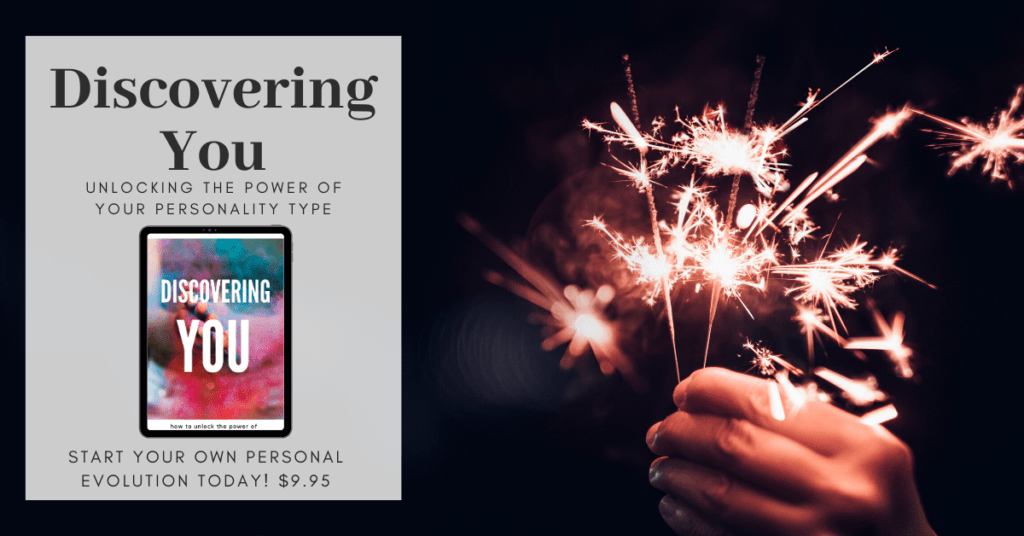
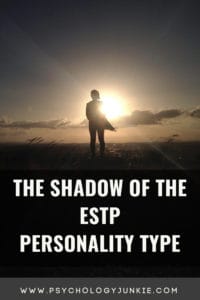

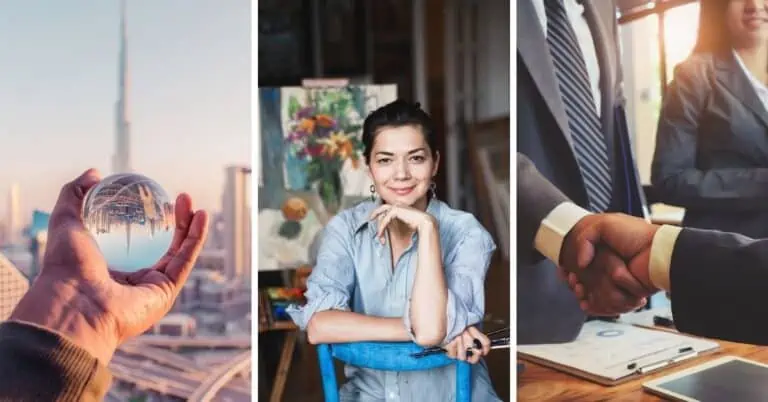
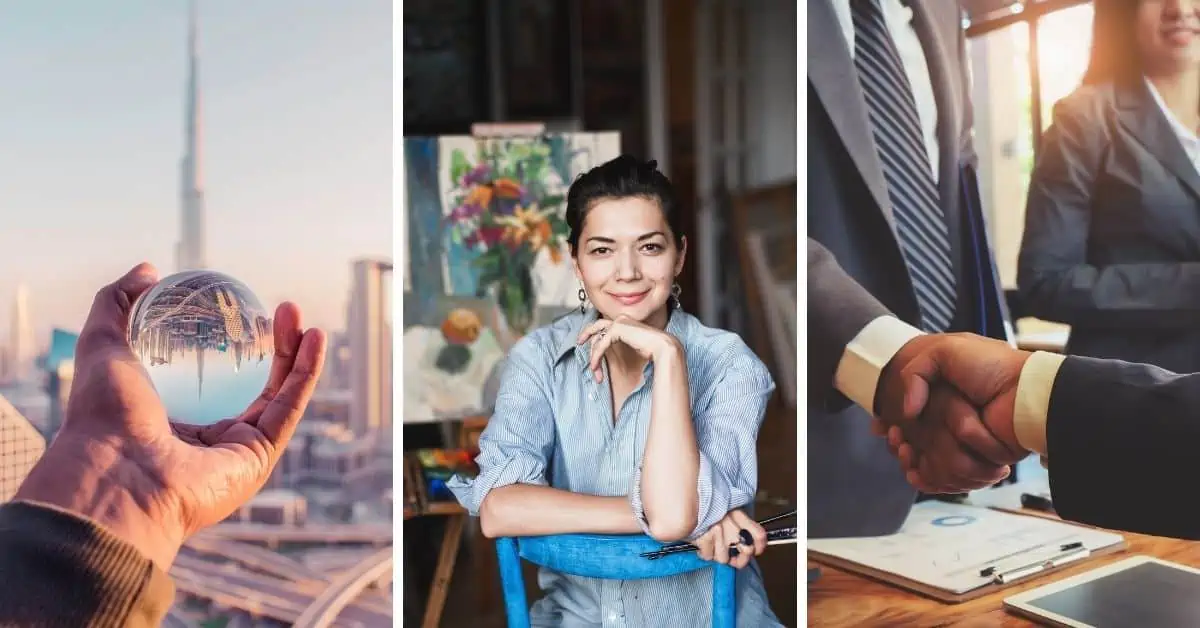




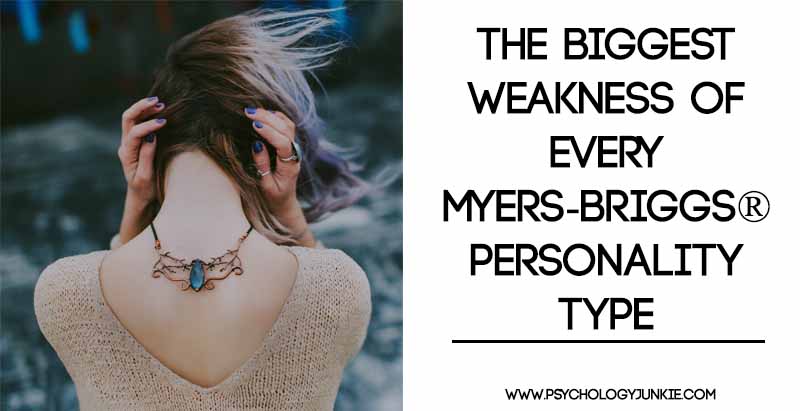


Type – ESTP
Great stuff, as usual
I grew up in a family of six kids. ESTJ Father. INFP mother. 3 STJ siblings. 1 SFJ sister. One I dont’ know for sure brother
An unhealthy booze filled family environment that I broke contact with for more than 15 years, as apparently the families Function culture was probably stimulating my Opposing Role and Critical Parent. Bad system matches. Bad Type Karma reborn. Before the break , in the last year of high school , I slipped into a stressed and harsh confrontational mindset getting in fights and harassing any non traditional kids
(BUNCH OF HAIR DYED NF WEIRDOS!! LETS GET EM!! YEEEEE HAAAA!!)
I kid, on those words, but that was the mindset
Interesting to see it that way, from the 8 Function perspective. I gotta incorporate 8 Function model into my Type understanding
And I’ve not seemed to have had much problems with my Demon and Trickster. I’ve just not seemed to have had much bad Demon experience, although I had strong and long term social paranoia experiences in The Grip, which I assumed was Ni/Fe tweeked, but perhaps that low level underlying unnamed fear was the ol’ Demon, although I don’t specifically remember seeing all future options as bleak. I just needed to do the Big Score and all would be all right, I tested ENTP originally and back and forth to ESTP for many test, Finally nailed it at MBTI Practioner course when Kerwin dude pointed out the obvious ESTP patterns
And I still don”t know what the fuck Fi is, like my nerve damaged baby toe, not feeling it, wouldn’t miss it :}
Do you reckon this clip could represent ESTP internal Function struggles?
Ben Stiller”s character being Se?
https://www.youtube.com/watch?v=b5I94bT23cQ